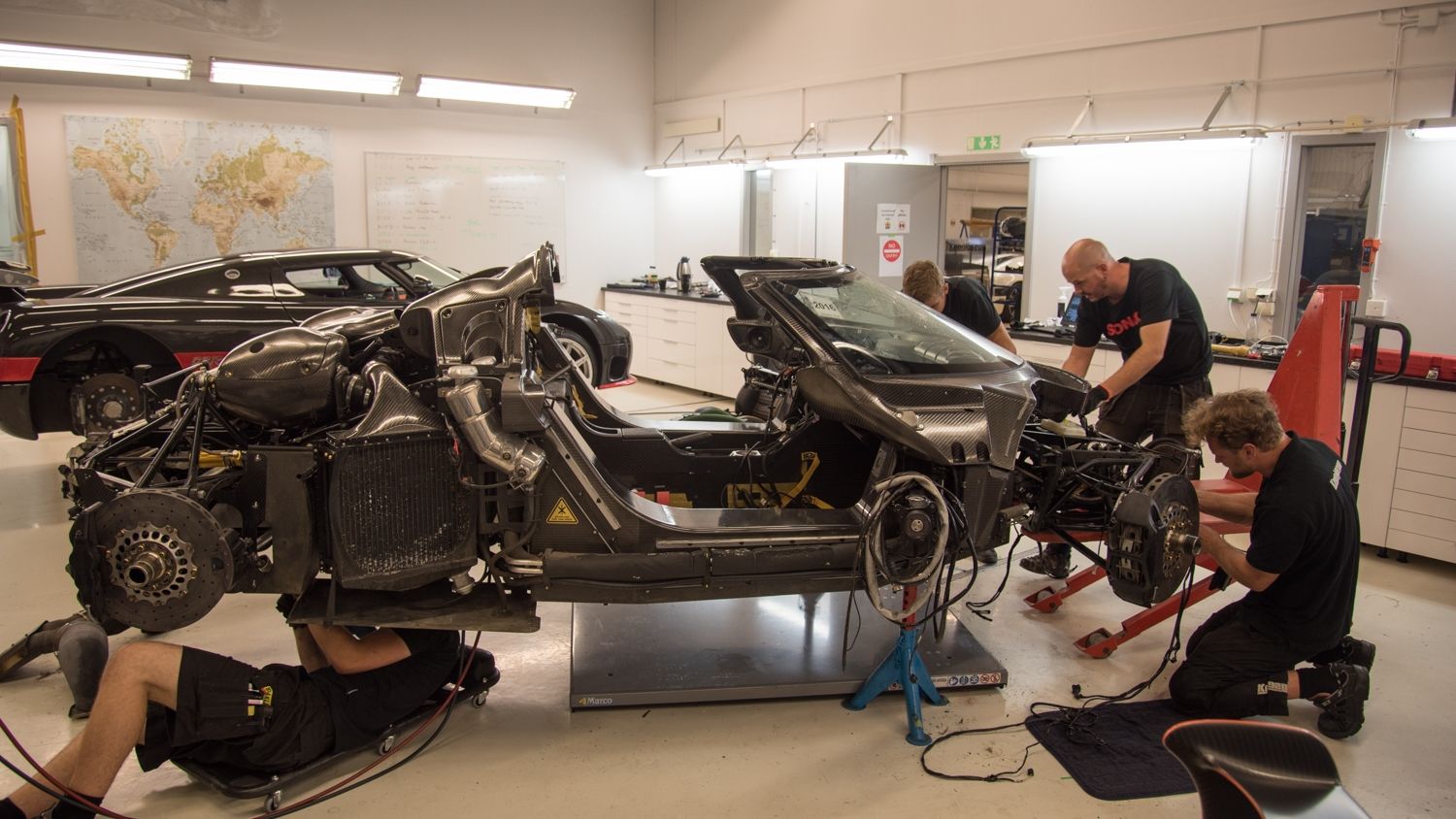A few days ago, the automotive world was shook to its core when a Koenigsegg One:1 crashed at the Nürburgring. The accident not only caused a lot of people to faint, or come close to it like I did, but more importantly, it opened up a lot of questions on what exactly caused the One:1 to careen straight into a barrier. Well, the One:1 was immediately sent back to Koenigsegg headquarters where company engineers immediately did an examination of both the damaged car and its on-board telemetry. Apparently, the culprit behind the crash is the left front ABS wheel sensor.
We theorized as much when we saw the skid marks left by the One:1 as it went off the track. Those marks indicated that something went wrong with the ABS, and after careful examination, Koenigsegg not only confirmed our suspicions, it also dove into the details of what exactly happened in the moments leading up to, during, and after the crash.
According to the automaker, the supercar had a front axle brake lock-up while it was going at a speed of 106 mph on a section of the track known as Fuchsröhre. The lock-up caused the driver to lose control of the car, resulting in the One:1 hitting the fence at Adenauer Forst at a speed of about 68 mph. The impact sent the One:1 flying to the air for an estimated 22 meters while turning 180 degrees. It eventually landed on its left rear wheel and pivoted to land parallel with the fence that it just hit. All of the car’s safety systems, including the airbags and the fuel shut-off, deployed as they were supposed to do.
The straight skid marks left by the front tires before the car hit the fence came as a result of the ABS system’s backup feature working to specification. This feature, according to Koenigsegg, allows the rear wheels to continue spinning in the event of an ABS malfunction that results in the front wheel locking up. This was put in place to prevent the car from rotating. When the One:1’s ABS system malfunctioned and the front wheels locked up, the rear wheels kept turning, helping create the skid marks that were left by the front tires.
As bad as the crash was, there is a silver lining to all of this misery. First and most important is that the driver of the car didn’t suffer any serious injuries. Second is that the One:1, despite looking like a mangled heap, can still be rebuilt. The carbon monocoque chassis, doors, and removable roof are all intact and properly functioning. Apart from a small fire that ignited when the carbon fiber rear panels and the exhaust made contact upon landing, the car suffered no fuel, oil, and hydraulic fuel leaks.
As expected, Koenigsegg plans to rebuild the car and will continue performing testing at the Nürburgring. There will be some delays given the unexpected developments, but once the car has been rebuilt, it will return to the scene of the crash to continue its test runs. Koenigsegg didn’t give out an exact date on when the One:1 will be rebuilt, but in true company fashion, it left the door slightly ajar for a possible return to the track within this year.
Continue after the jump to read the full story.
Why it matters
A crash of this magnitude deserves some attention so it’s no surprise that Koenigsegg immediately had the crashed One:1 shipped back to company headquarters so it could determine what went wrong with the car. The results are what a lot of people suspected given the evidence that was seen at the scene of the crash. The ABS system malfunctioned and while that may not seem like too big of an issue for some people, it actually is a serious problem that’s magnified because of how fast and powerful the One:1 is. Imagine driving the One:1 to its peak potential and then having the ABS systems malfunction on you. It’s a scary proposition to begin with and one that I’m not wishing on even my worst enemies.
The question now is whether the problem that plagued this particular Koenigsegg is also going to manifest itself in the six other models that have been built. It’s a legitimate question to ask considering what happened to the car and how much it costs. I don’t want to be one of the owners and have this issue show up when I’m driving it. To Koenigsegg’s credit, it’s already come up with a pre-emptive measure to address it when it announced that it will implement software changes that will be rolled out to all applicable models in the near future.
Is that going to be enough? I honestly don’t know. What I do know is that there will be a lot of people that will be looking at Koenigsegg to see how fast it can rebuild the car and how much improvements it will make on the safety systems of all seven One:1 models in existence today. I for one will be looking really closely at how the Swedish automaker addresses this. We marvelled and cheered when Koenigsegg introduced the One:1. Now that it’s experiencing the equivalent of a crisis, it’s time to see how Koenigsegg will be able to navigate these treacherous waters.
All eyes are on you now.
Koenigsegg One:1
Read our full review on the Koenigsegg One:1 here.

